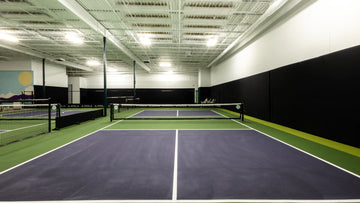
Title: Unraveling the Game: A Comprehensive Guide to Pickleball Rules
Introduction:
Pickleball, a dynamic and fast-growing sport, has taken the recreational world by storm. Combining elements of tennis, badminton, and ping-pong, pickleball is a fantastic game for players of all ages and skill levels. However, like any sport, pickleball has its own set of rules that govern the gameplay. In this blog post, we'll dive into the essential rules of pickleball, ensuring that you're well-equipped to enjoy this exciting sport while adhering to proper etiquette.
- The Basics of the Court and Equipment:
- Pickleball is typically played on a court similar in size to a doubles badminton court. The dimensions are 20 feet wide by 44 feet long for doubles, and the net is set at 36 inches at the sidelines and 34 inches at the center.
- The game is usually played with paddles made of wood or composite materials, and a plastic ball with holes (similar to a wiffle ball) is used.
- The game can be played as singles or doubles, but doubles is more common and is the focus of these rules.
- Serving:
- The serving team starts the game from the right-hand side of the court (even-numbered side). The server must hit the ball underhand and diagonally across the net, aiming for the opposite service box.
- The serve must clear the non-volley zone (the area within 7 feet from the net) and land within the boundaries of the opponent's service court.
- The server continues to serve until a fault occurs (e.g., the ball lands out of bounds, the net is hit, or a foot fault is committed).
- Scoring:
- Pickleball uses a rally scoring system, meaning points can be won on both the serving and receiving team's serve.
- Only the serving team can score points, and the game is typically played to 11 points. However, you must win by a margin of at least 2 points.
- The server's score is always announced first, followed by the receiver's score.
- Double Bounce Rule:
- After the serve, the receiving team must let the ball bounce before returning it.
- The serving team must also let the return bounce before hitting it.
- Once both teams have successfully completed these two bounces, they can choose to volley (hit the ball without letting it bounce) or continue with regular play.
- Non-Volley Zone (Kitchen):
- The non-volley zone, also known as the "kitchen," is the area within 7 feet from the net.
- Players cannot volley the ball (hit it in the air) while standing in the non-volley zone.
- You can enter the non-volley zone after the ball has bounced.
Conclusion:
Understanding and following these essential pickleball rules is crucial for a fair and enjoyable game. As you embrace this exciting sport, keep in mind that good sportsmanship and respect for your fellow players are just as important as knowing the rules. So grab your paddle, head to the court, and have a fantastic time playing pickleball while staying within the bounds of the game's rules and etiquette.
Learn more:
https://www.majorleaguepickleball.net/
https://www.theapp.global/academy
Tags:




